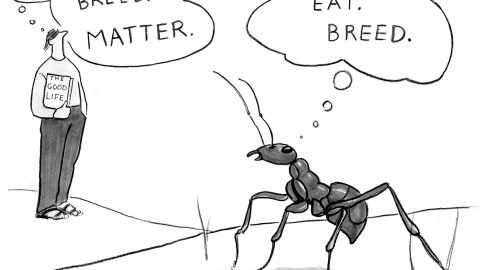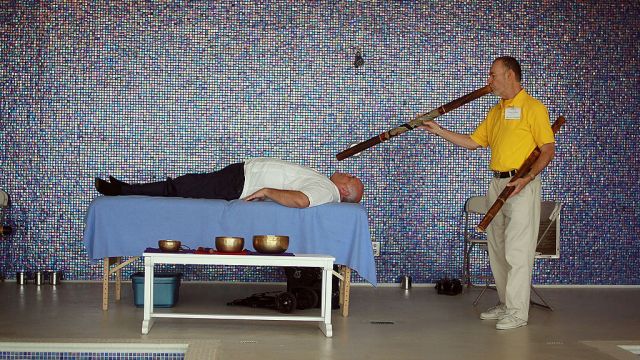The Real Story of What Got Us to the Top of the Food Chain

1. What got us to the top of the food chain? Yuval Harari says it wasn’t bigger brains and tools. His view of what mattered will surprise fans of evolution’s red-in-tooth-and-claw story.
2. Going from “stone-tipped spears to… spaceships” took us ~20,000 years; meanwhile, our brains have shrunk ~10% (note: Neanderthal brains were bigger).
3. But we’ve had tools for ~2 million years (intelligently designed tools have long shaped our genes).
4. Harari says the “crucial factor” was our unique capacity “to cooperate flexibly in large numbers.”
5. Cooperation is critical for both types of what biologist E. O. Wilson calls “the social conquest of Earth.” Humans and social insects dominate the biosphere (because, organized groups can always outperform individuals, in combat, and in peacetime productivity).
6. Ants and bees were doing large-scale cooperation millions of years before us. But their cooperation is kin-based and inflexible (adapting genetically = slowly).
7. David Sloan Wilson calls teamwork humanity’s “signature adaptation,” but Harari describes how scaling beyond team-level cooperation was key.
8. This “large-scale human cooperation” requires shared stories, because “The human mind is a story processor, not a logic processor.” Stories transmit what matters in a culture, and configure our “emotional grammar” (aside: Harari usefully calls emotions “biochemical algorithms”).
10. We live in a “web of stories” about what matters. In that sense artists and “storytellers run the world,” and a culture’s storytelling resources shape its politics and moralities (Alasdair MacIntyre).
11. Languages, stories, the arts, religions, moralities, politics, and economics are all social tools for organizing cooperation.
12. We’d be wiser to call ourselves “Homo Storius” or “Homo Narratus” or “Homo Socius” rather than Homo Sapiens (sapiens derives from judgement or taste). Our wisdom is story-driven and deeply social.
13. Stories, like all meaning, are relational (intrinsically social, not individual). We’re likely the most other-dependent species ever (inalienably self-deficient by nature). Those with life-structuring stories that are fittest for cooperation, win.
14. Our innate story-hunger enables what Rebecca Goldstein calls our “mattering instinct.” We’re driven to connect to cooperative projects greater than ourselves. If a community’s life-shaping stories don’t connect mattering to collective survival (and related needs), that community, and those stories, won’t survive.
15. The story that evolution is all about competition, overlooks widespread cooperation. Symbiosis isn’t rare, it’s the rule. Every “selfish gene” must cooperate. Every animal cooperates with billions of microbiome mates. Trees run redistributive social safety nets.
16. These cooperation-and-competition-mixing strategies face natural selection, and the most sustainably productive wins. Internal competition that hinders sustainable cooperation becomes self-defeating. Humans are how evolution exceeds the limits of individual competition and slow-changing genes.
17. A narrative-level natural selection is at work. Communities with story norms that help suppress destructive internal competition, survive better. History shows victory goes to those who “cooperated better.”
18. It’s clear we can’t live without tools. But it also took large teams and large tales to enable our cooperative survival and dominance. That’s the bigger story. That’s what matters.
—
Illustration by Julia Suits, The New Yorker cartoonist & author of The Extraordinary Catalog of Peculiar Inventions





